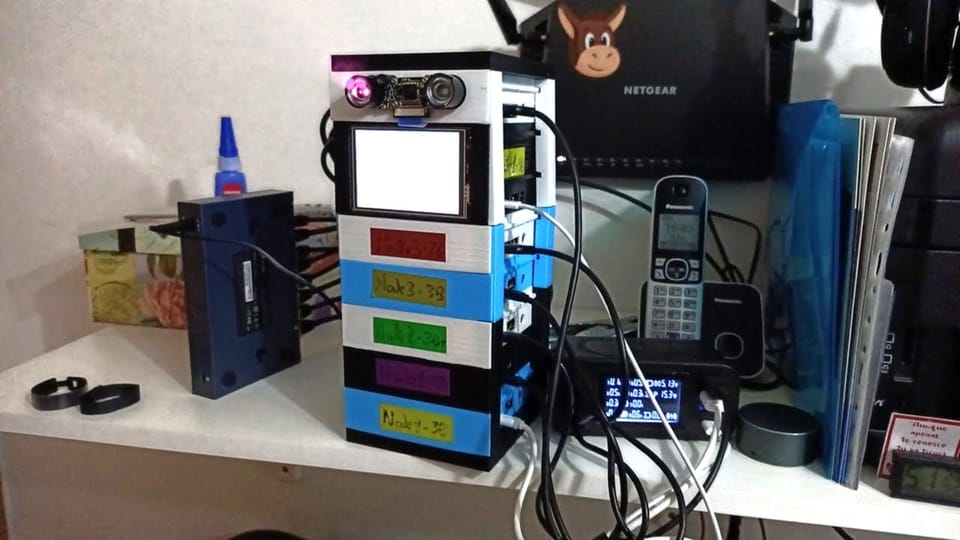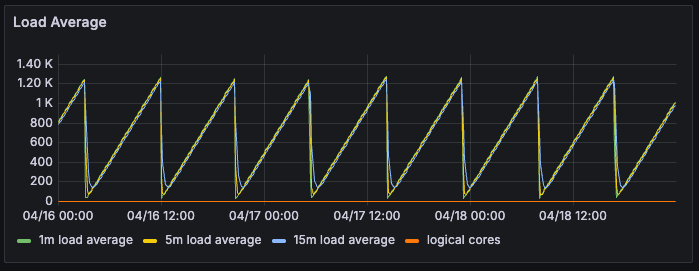DockerHub Rate-Limit Doom: A Kubernetes Odyssey

Sometimes technical challenges just come out of nowhere—and ruin your day (or, let's be honest, months). Let me tell you the epic tale of how a sudden DockerHub limitation threw my team into a mad scramble, some detective work, Bash scripting sessions, and ultimately led us to a better Kubernetes practice overall.
A bad surprise 🫠
It all started on February 21st. Casually checking YCombinator's Hacker News, I froze. Docker had quietly announced that starting April 1st they'd enforce a rate limit of just 10 image downloads per hour. This wasn't just a minor inconvenience; it was a ticking time bomb for our upcoming Kubernetes upgrades (Blue/Green deployments FTW!).
Immediately switching my priorities around, I dove head-first into trying to understand the scale of the incoming catastrophe. I confirmed things with a Docker sales representative, who tried reassuring us the limit would be postponed. But with April looming and the official DockerHub page still adamantly warning us otherwise… I decided this was definitely something worth addressing ASAP.
It was March, the clock was ticking. ⌛
Hunting down the culprits 🕵️♂️
First things first: we needed to understand the extent of this dependency on public DockerHub images.
My colleague and I quickly whipped together in Grafana a PromQL query to detect workloads that might be using DockerHub images. I soon found out, painfully, that it totally overlooked initContainers 🤦♂️. No good.
Undeterred (well, sort of), I rolled up my sleeves again and hacked together a Bash script to properly scrape all our Kubernetes workloads, capturing even those pesky initContainers. Here's my script, uploaded to GitHub for your viewing pleasure:
👉 k8s-dockerhub-detector script
Fun fact: the sheer volume of workloads we discovered startled everyone. On some small clusters, no biggie—maybe ~20 images. But on some others? Over 200 images! Suddenly everyone understood why my sense of urgency was justified. 😅
Proudly showing my resulting monster-sized documentation page, listing all the workloads (affectionately named "The Wall of Shame"), I divided up the job so that not only one of us had to handle all the tedious work. Let the DockerHub purge begin!
Mirror mirror, where should we move? 🪞✨
We weren't going to leave images dangling from DockerHub, hoping to never hit rate limits. But what next—Harbor? Artifact Registry? Self-hosting wizardry?
Initially another team graciously offered us access to their existing Harbor instance. While exploring this, I stumbled across inconsistencies between different teams in namespaced Secret management within the Kubernetes Replicator application (wasn't looking for more trouble, but we got standards now, yay!).
I also checked out Spegel—a caching Docker registry proxy—but disappointingly found it impossible to deploy smoothly in our managed GKE environment. Goodbye Spegel, you looked cool. 😢
Then it struck me: why not save on excessive ingress costs by using Google's own Artifact Registry in mirror mode? Aha! We saw substantial cost-efficiencies immediately—huge win. 🎉
Smaller workloads not hosted in GCP went smoothly into Harbor or stayed simple by using other registries, but giant, heavy GCP clusters gratefully leveraged Artifact Registry mirroring.
That was the easy part? Wait... what… 😟
Changing a few manifests is easy enough, right? Oh, sweet summer child. You've clearly never experienced Kubernetes lifecycle complexity at scale.
Some workloads were stubbornly difficult. Helm charts without consistent image substitution mechanisms, a sprawling variety of legacy software deployments, and workloads with images explicitly prefixed with docker.io. 😓
A cluster-wide Mutating Admission Controller to rewrite image URLs seemed theoretically wonderful, but practically speaking, the team understandably hesitated. Why risk causing havoc on private, critical workloads because of unavoidable regex mishaps? And some images were hardcoded in such lovely ways (docker.io/painful). Scratch that risky approach.
Down the rabbit hole 🐰🕳️
One particularly challenging case involved Argo Workflow’s mysterious companion: the EventBus CRD. Not documented (typical 💩), zero clues about image customization, and resorting to manually inspecting actual source-code (GitHub search digging is unsurprisingly not listed as my favorite pastime).
After some head-scratching spelunking🐱👤, I found out (thank the Kubernetes gods!) that if we introduced the EventBus as part of the argo-events helm chart, we could actually customize images and bypass DockerHub completely.
And yes, we actually ended up deploying a whole new Helm chart simply to fix one stubborn EventBus CRD. Crazy, I know, but hey—whatever works, right?
The epic achievement 🎖️
It wasn't all doom and gloom. By gradually swallowing the whale, carefully checking each chart, each deployment, and navigating through a minefield of legacy YAML configurations, we finally reached our goal.
Ultimately, March passed, and April 1st came and went with DockerHub apparently delaying the enforcement (again). Although the disaster scenario didn’t materialize (yet), what we accomplished was priceless:
- Better Kubernetes manifest hygiene ✅
- Huge infra cost savings thanks to Artifact Registry mirrors ✅
- Improved Cloud practice standards and cross-team cohesion ✅
- Another random Bash script added to my GitHub portfolio ✅
Sometimes, it takes a looming disaster to push us into meaningful action.
Conclusion 🎉🐳
Our DockerHub odyssey ended up benefiting us tremendously. It took teamwork, some stress, and a fair dose of caffeine-induced investigating, but the result makes me proud.
Of course, next time I'd rather spot announcements like these a bit sooner—my heart and Kubernetes manifests would appreciate it.
Until then, stay vigilant out there, folks! Keep your eyes open: you never know when Kubernetes' next wild obstacle will appear. 🧐
p.s. If you've faced similar odysseys, I'd love to hear your story! Ping me @ Mastodon—I’m always up for trading war stories from Kubernetes trenches.


